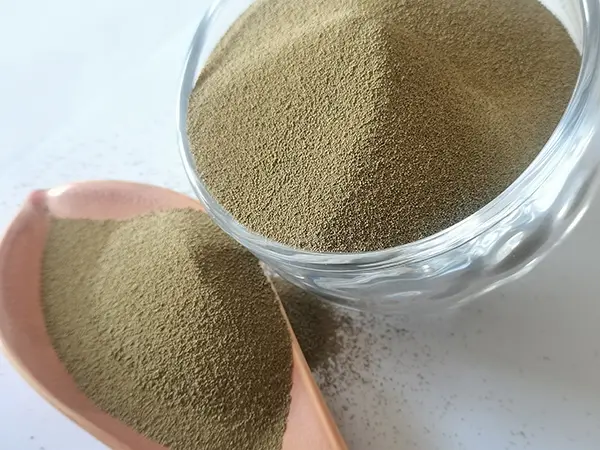Properties of Foundry Sand
Foundry sand is a crucial component in the metal casting industry, used predominantly for making molds and cores for the casting of metals. The unique properties of foundry sand contribute significantly to the efficiency and quality of the casting process, making it an essential material in foundries worldwide.
One of the primary properties of foundry sand is its high thermal stability. This characteristic allows the sand to withstand the intense heat generated during the metal pouring process without degrading or changing its shape. Silica sand, the most common type of foundry sand, has a high melting point, allowing it to maintain structural integrity under high temperatures. This thermal resistance helps in achieving precise cast shapes and minimizes defects caused by mold collapse during metal solidification.
Another vital property is the sand's permeability. Permeability refers to the ability of the sand mold to allow gases created during the metal casting process to escape. Good permeability is critical, as trapped gases can lead to flaws such as porosity and gas defects in the finished casting. Foundry sands are specifically chosen and processed to enhance their permeability, ensuring that gases can freely escape, thus improving the quality of the final metal object.
properties of foundry sand

Additionally, foundry sand exhibits excellent refractoriness, which is its ability to resist melting or softening at high temperatures. This property not only supports the mold structure during casting but also ensures the retention of fine details in the castings. The mix of sand grains and their angular shapes contribute to the overall strength and refractoriness of the mold, allowing for complex and intricate designs without compromising the mold’s integrity.
Furthermore, foundry sand possesses good cohesiveness. This property allows the sand grains to stick together effectively, providing the necessary strength to the mold or core. The mixture of sand with binders, such as clay or resin, enhances this property, leading to improved mechanical strength and durability. Cohesiveness is essential for molding applications because it prevents the molds from cracking or breaking under the stress of pouring molten metal.
Lastly, foundry sand is reusable, which offers an economic and environmental advantage. After the casting process, the used sand can be reclaimed, cleaned, and recycled for future molds. This not only reduces waste but also lowers production costs, making foundry operations more sustainable.
In conclusion, the properties of foundry sand—including thermal stability, permeability, refractoriness, cohesiveness, and reusability—make it an invaluable material in the metal casting industry. Understanding these properties allows foundries to optimize their casting processes, ensuring high-quality finished products while minimizing defects and environmental impact.
Post time:Dàmh . 15, 2024 21:42
Next:Techniques and Benefits of Dry Sand Casting in Modern Manufacturing Processes
